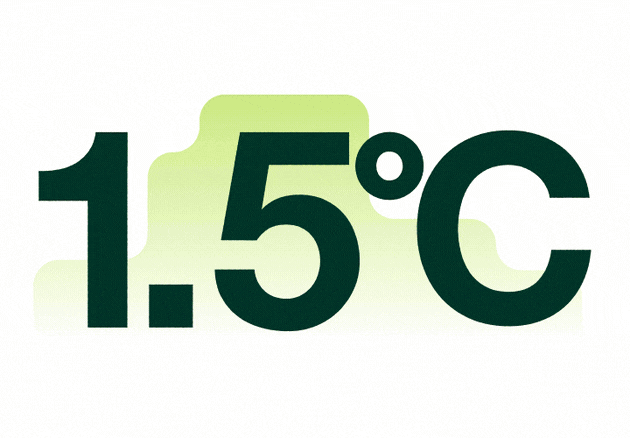Extremely Normal: A Very 2021 Look at Food, Climate Change and Extreme Weather

It isn’t invisible. It isn’t abstract. It isn’t far off in the future, or far off in a different country. Climate change is here. It’s not only in the Arctic Circle, or barrier reefs, but on the farm. And it has the potential to make your next trip to the grocery store uncomfortable. If climate change goes unaddressed, food prices could rise, availability could drop and the consequence, especially for those that are most vulnerable, could be limited access to food. But progress is being made. Farmers and scientists are working together to help mitigate the effects of climate change, help make farms more resilient, and keep our food supply affordable and reliable.
While the COVID-19 pandemic has reshaped our lives and imposed tremendous hardships, it has also revealed the best in us. We’ve innovated. We’ve collaborated. We’ve put our nose in a mask, and put our trust in science. We’ve had to completely reimagine the way the world could work. All in the name of public and personal health.
But, of course, there have been consequences to the lockdown. Mandatory distancing has strained supply chains. In some cases, these chains have broken, creating shortages of certain foods. And rising unemployment and school closures put us at risk of losing the progress we’ve made against hunger over the last few decades.
While we continue to work through the challenges that COVID-19 has created within our food supply chains, we can’t lose sight of what the future demands of us. Because, while many of us are still stuck at home and that the world outside continues to warm.
A Slow Rolling Emergency
Though climate change doesn’t happen overnight, its ramifications can.
In one region, climate change may look like a flood—deeper and more frequent—or it may look like a wildfire sweeping through an orchard, or it may look like a little green worm the size of a push pin.
That’s the puzzling equation of the climate challenge. A simple, slow, linear increase in planetary temperature produces vastly diverse consequences on the ground. Consequences that are tough to predict, and even harder to prepare against. There are reasons to be optimistic about the future, though. Innovation doesn’t stop in the face of a challenge, it accelerates. And as temperatures rise, this sense of urgency is being felt by farmers, scientists, and researchers around the world.
1°C
Right now, global temperatures are about 1°C above pre-industrial averages. However, different parts of the world are warming at different rates. For example, the Arctic’s cold season, and the earth’s mid-latitude regions during the summer, which include the United States and Europe, are warming the fastest.
In the traditional temperate zones, where much of the developed world’s grain is grown, we’ve seen weather extremes intensify—high winds and floods have thrashed crops in the American Breadbasket, heat waves and insufficient rain have reshaped agriculture across Europe, and in the western U.S., droughts and wildfires threaten even the most resilient farms—and communities.

$220 Billion
That's how much crop diseases cost the global economy every year.
1.5°C
What could happen with another half degree Celsius rise in temperatures?
In addition to an uptick in extreme weather, farmers have also been facing increasing severity and scale of crop diseases since the middle of the 20th century as a result. Currently, up to 30% of worldwide crop loss comes from plant diseases. And climate change is exacerbating the problem. Crop diseases aren't only getting worse. They’re moving. Many diseases are expanding beyond their historical geographic range.
Research tracking crop disease since the 1960s shows that as the earth warms, pathogens like fungi are moving at a rate of about two miles (3.2 km) a year toward the North and South Poles.
Important crops like citrus, bananas, soybeans and potatoes are all threatened by emerging diseases, the battles against which will be further complicated by rising global temperatures. Citrus Greening Disease, for example, may move north as temperatures rise. This incurable plant disease threatens the existence of the citrus industry, and has already cost American farmers billions of dollars.

10%
Of the world's population remains undernourished as temperatures rise.
2°C
At a 2°C global temperature rise, the planet will reach irreversible tipping points, which is why the United Nations’ Paris Agreement chose this mark as its threshold. If the earth’s temperature were to rise 2°C, about 13% of our land area would shift from its current ecosystem into another. This will deeply change the way agriculture works.
One repercussion would be that moving climates would drive insect pests into new regions, faster. For American farmers, this means pests that are in the South now, would travel farther north, potentially disturbing local food production and biodiversity.
A recent study found that if we fail to limit global temperature rise to 2°C, American corn production could decrease by 18%. That would set farm production back at least 15 years to a time when there were a billion fewer people on the planet. If we reach 4°C, corn production would be cut nearly in half. But, of course, the climate problem is far bigger than one crop, or one country.

Can Farmers Defend Our Food?
Our climate is like a giant ship. Steering it one way or the other takes time, foresight and a lot of moving parts. And the farther off course we go, the more dangerous the waters become.
It can feel like the challenges of climate change are far away and theoretical. But what if the threat felt more immediate? For those growing our food, it does.
Farmers, partnered with innovators in science and technology, are tackling climate change on two fronts. One—researchers and scientists working in agriculture are finding ways to overcome the effects of climate change to continue growing enough food, and two—farmers themselves are a tremendous part of the solution addressing the root cause of climate change by implementing practices that pull carbon out of the atmosphere and lock it into the soil.
Resilience, to the Extreme
Crops may have to change shape in response to a changing climate. When traditional corn, which stands around 8-10 feet tall, snaps during a powerful storm, we lose the grain that crop would have produced, and we lose the natural resources that went into growing it. So, scientists at Bayer are breeding and testing corn that stands shorter in the field. When it’s launched, shorter corn could be more resilient in a storm, just as productive for farmers, and ultimately more sustainable for our planet.

In some parts of the world, climate change could limit rainfall. But farmers have innovation on their side. Drought resistant varieties of plants, and artificially intelligent monitoring systems that let plants tell farmers when they need water, and when they don’t, allow agriculture to conserve. Some farmers also have drip irrigation systems that can lead to water conservation of up to 40%.
Another tool farmers have to stabilize moisture levels in their fields comes in the form of decomposing plants. Sustainable farming practices, like planting offseason cover crops and choosing not to till the soil, help the fields hold more water. In fact, every 1% increase of organic matter in soil results in maintaining 20,000 gallons of available soil water per acre.
Along with water, cover cropping and conservation tillage also help keep carbon in the ground and out of the atmosphere.

Few on-farm, yield-impacting factors are harder to predict and more consequential than the decision to apply a fungicide to manage plant disease. With digital farming tools in their hands, farmers are able to monitor the progression of their fields throughout the season, tracking field health and managing in-field scouting activities easily. The next generation of digital agriculture capabilities will include prescriptive fungicide recommendations built using advanced data science and artificial intelligence. Application prediction capabilities, coupled with plant varieties that express resistance to certain diseases, will help agriculture respond quickly to diseases pushed to new areas by climate change.

Warmer weather makes insects more active, more reproductive, and ultimately hungrier. One of the costliest insect pests, the fall armyworm, has been emboldened by climate change. This pest, whose meal of choice is corn, prefers warmer, wetter climates, so the warming of the Midwest is cause for concern. But farmers have an answer. Bayer has developed GM crops that contain proteins that allow the crop to protect itself. So, when a fall armyworm bites into the plant, the reaction is fatal to the insect.

A Silver Lining in the COVID Cloud?
It’s true. Carbon emissions fell in 2020. The COVID-19 pandemic has slowed travel, dropped energy consumption, and curbed the flow of manmade carbon dioxide into the atmosphere. But that’s far from the end of the story. The approximately 8% drop in emissions last year is the opposite of sustainable. This minor drop in emissions has come at the highest possible cost.
So, when it comes to carbon emissions, does the pandemic offer a silver lining? It does, if you believe that science and innovation should lead the way on pressing global challenges. This and the year before have reassured us that collaboration is still our best idea, and ingenuity is still our best tool.
There’s never been a question of whether we will overcome this pandemic, because we have bigger plans on the horizon—long-term goals like health for all, and hunger for none—for this generation, and each that follows. Managing carbon and bringing our planet back into balance should feel the same. Of course, agriculture and farmers are just one part of the larger global puzzle. Solving these problems will require bold innovation in a number of industries.
Sources:
1 https://www.cimmyt.org/news/pests-and-diseases-and-climate-change-is-there-a-connection/
3 https://reeis.usda.gov/web/crisprojectpages/0224523-predictive-modeling-and-mitigation-of-the-effects-of-climate-change-on-the-infestation-patterns-of-a-migratory-crop-pest-insect.html
4 https://www.sciencedirect.com/science/article/pii/S0167880919304219
7 https://www.nature.com/articles/nature10947?proof=true1
9 https://www.nature.com/articles/s41598-017-08214-4
11 http://www.fao.org/news/story/en/item/1187738/icode/











